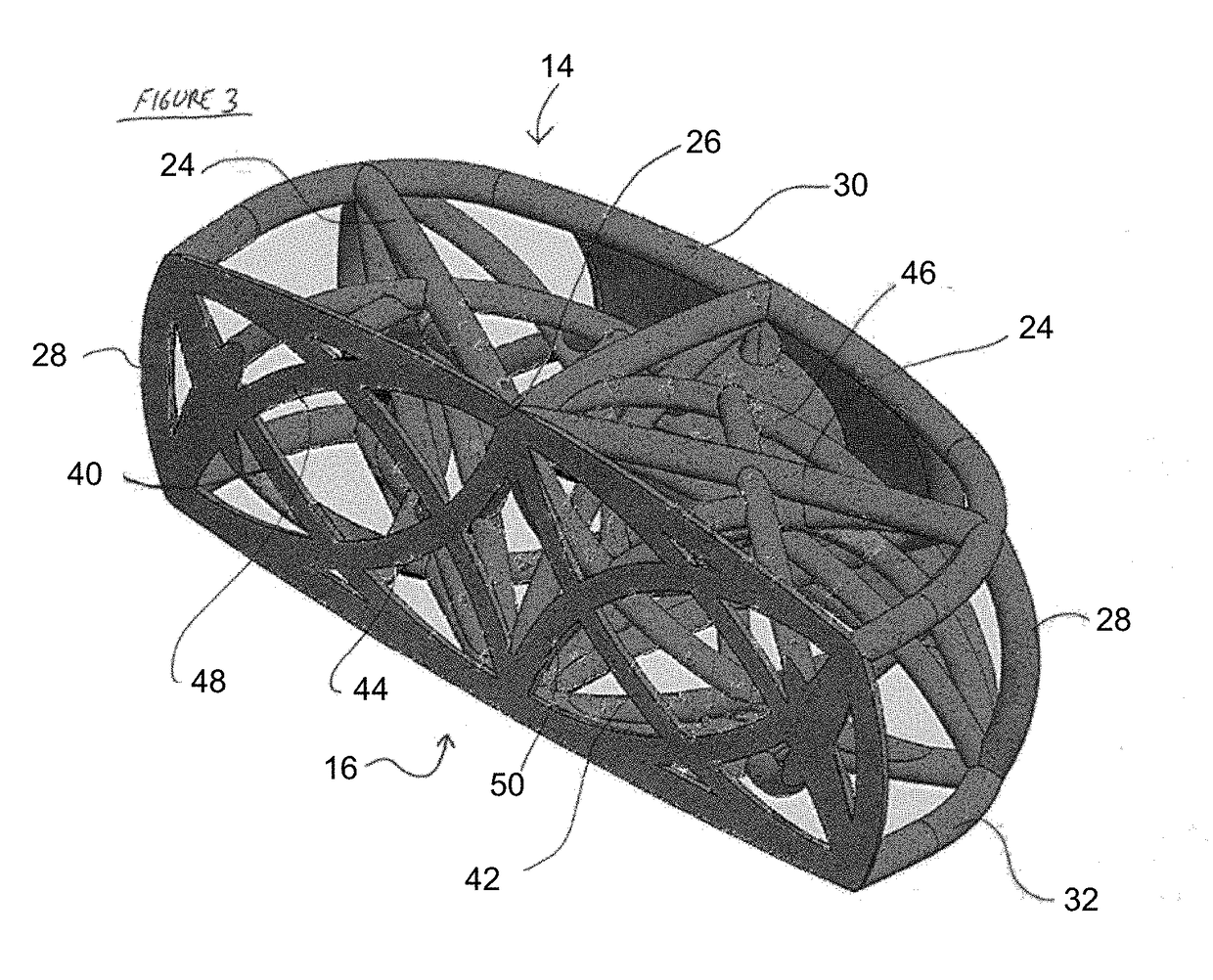3D printed osteogenesis scaffold
a 3d printing and osteogenesis technology, applied in the field of 3d printing osteogenesis scaffolds, can solve the problems of bone pressure necrosis, inconsistent mechanical strength of patients' own autografts, and implants based on bone material
- Summary
- Abstract
- Description
- Claims
- Application Information
AI Technical Summary
Benefits of technology
Problems solved by technology
Method used
Image
Examples
Embodiment Construction
[0013]The present invention addresses the problem by providing implants such as intermedullary nails or spinal fusion cages that have a functional modulus of elasticity that is substantially the same as the modulus of elasticity of the native bone at the implant site. For example, implants can be provided having a functional modulus of elasticity of between about 5 GPa and about 75 GPa, typically between about 10 GPa and about 50 GPa and in some implementations between about 10 and about 30 GPa. Functional modulus means the effective modulus of the final implant, which will be the result of both the modulus of the material of the implant as well as the result of the arcuate strut architecture of the implant, as will be described below.
[0014]In addition, human or animal tissue is generally not structurally isotropic. For example, cancellous bone includes trabeculae, also referred to as spicules, defining a plurality of open spaces. The trabeculae and open spaces are generally oriente...
PUM
| Property | Measurement | Unit |
|---|---|---|
| Young's modulus | aaaaa | aaaaa |
| Young's modulus | aaaaa | aaaaa |
| compressive strength | aaaaa | aaaaa |
Abstract
Description
Claims
Application Information
 Login to View More
Login to View More - R&D
- Intellectual Property
- Life Sciences
- Materials
- Tech Scout
- Unparalleled Data Quality
- Higher Quality Content
- 60% Fewer Hallucinations
Browse by: Latest US Patents, China's latest patents, Technical Efficacy Thesaurus, Application Domain, Technology Topic, Popular Technical Reports.
© 2025 PatSnap. All rights reserved.Legal|Privacy policy|Modern Slavery Act Transparency Statement|Sitemap|About US| Contact US: help@patsnap.com



